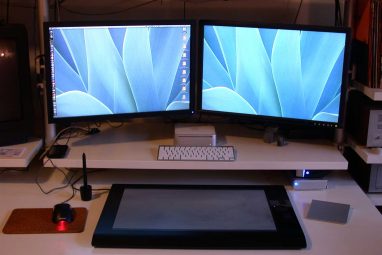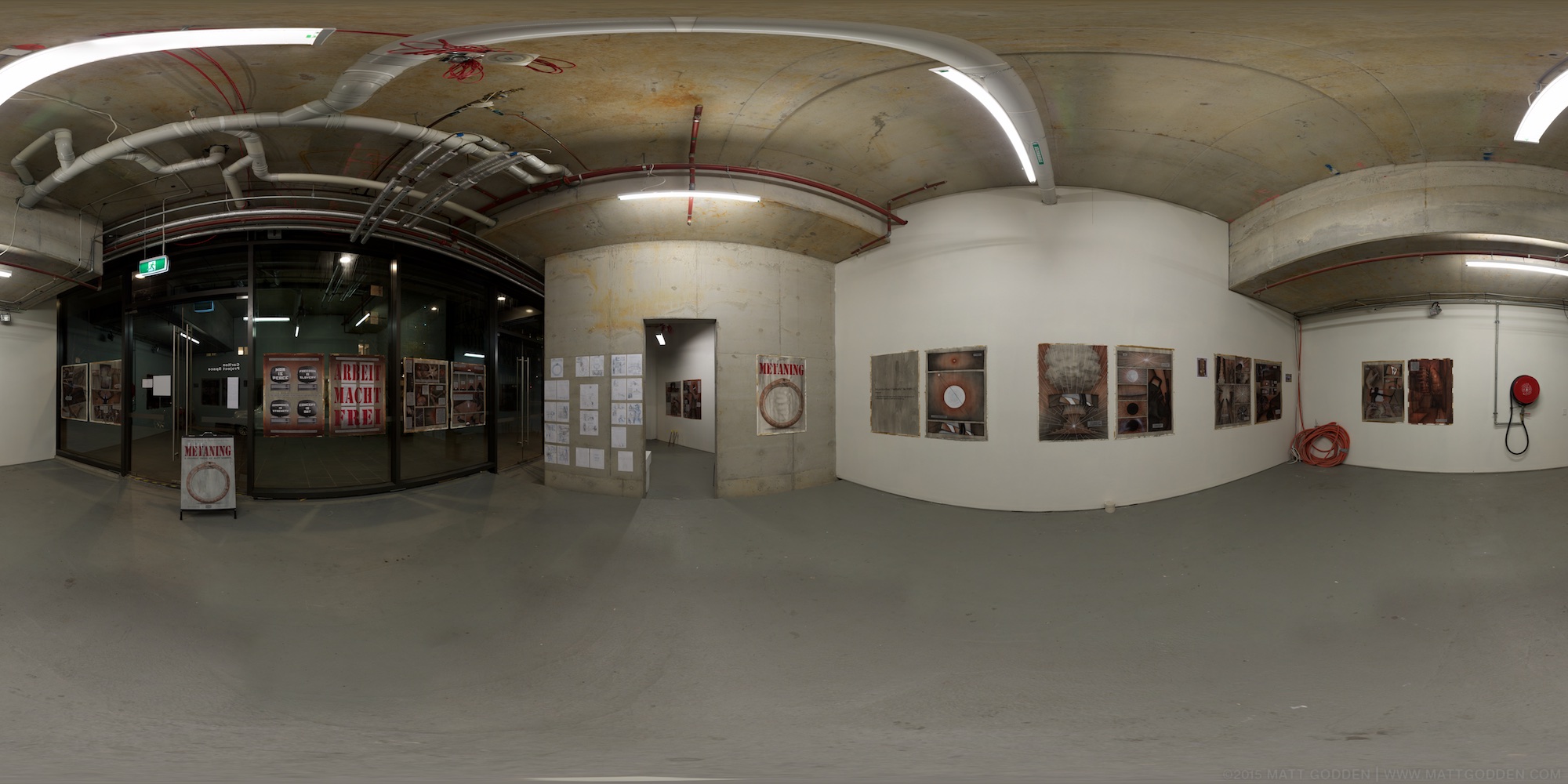
With 2013 upon us, we’re in the window in which Apple CEO Tim Cook had promised that there’d be something new for Pro customers. Many people interpret this as code for a new Mac Pro which would in some way resemble the current behemoth.
I’m not so sure. I wonder if we’re in for an FCPX-style paradigm shift. Back when Apple introduced the first G3 PowerMac, there were two models of machine serving the Pro desktop market – the Powermac 8600, and 9600. The only difference was that one had three PCI slots, the other had six. The replacement G3 had 3 slots. Apple’s answer to those complaining, was to suggest that many of the previous two-card solutions had consolidated onto single cards, alleviating much of the need for six slots. Further, they suggested that the small fraction of the user base who needed more slots could go buy a PCI expansion chassis, which would plug into an existing slot and provide up to six more.
I hope we’re in for a similar shift on the Mac Pro.
Right now Apple offers three desktop options, each of which have their own drawbacks.
- Mac Mini – Current model uses system memory for graphics, and getting more than 2 displays requires some adapter voodoo. Additionally, the graphics hardware itself isn’t very powerful, and there are always going to be issues regarding applications that are disproportionately sluggish or flat out unable to run on Intel integrated graphics.
- iMac – Built in screen. Graphics card is also built in, so when your graphics aren’t up to the task, you have to throw out a perfectly usable screen (starting up in monitor mode isn’t a long term solution IMHO).
- Mac Pro – Hugely expensive, and massively overbuilt for all but a very small number of users.
So here’s the problem – there’s a vanishingly small proportion of Apple’s user base who actually require PCI slots. Almost every type of pro function that would require a PCI slot can now be done with an external peripheral, except one – Graphics.
They done goofed with Thunderbolt.
In my opinion, the most amazing thing Thunderbolt was supposed to be able to do, was to allow for an externally housed graphics card. More or less everything else it does is a replication of what could already be done with existing connection standards. However, this isn’t currently possible under OS X, which I understand is a system software issue. If you look up any of the current makers of Thunderbolt PCI expansion chassis, every one I’ve seen specifically omits graphics cards. To an extent, this is understandable. The Thunderbolt spec only offers a 4 lane connection, while a higher performance graphics card will typically require an 8 or 16 lane connection to operate at peak performance.
Thunderbolt then, is not a solution to the “I need an upgradable, or better than Apple built-in video card” problem.
With that in mind, here’s the system I’d like to see from Apple:
- Mac Pro class CPUs & RAM.
- A single drive bay with an SSD or Fusion Drive.
- A single full length, double width, high power PCI slot.
- Thunderbolt, Ethernet and USB ports.
And that’s it. Imagine a brick of aluminium, 4×4″ high & wide, maybe 12″ deep.
That’s what I want to see as the new Mac Pro. Something that offers professional performance, yet follows the philosophy of cutting away the superfluous. The marketing angle would focus on it being “every thing needed by every pro”.
Here’s some reasoning for it. Currently, if you want to do serious 3D, the Mac Pro is your only option, but again, for a 3D professional, you’re buying all that machine, JUST for the ability to put a decent graphics card in it. Chop all that unnecessary stuff out, and you get a machine that’s just as powerful, has the graphics potential needed, weighs a third as much, costs less to manufacture, less to ship, less to store etc.
A server version for lights out management could replace the graphics card with a fibre channel or ethernet card.
What about people who need more than one card? The solution would be a PCI Expansion chassis that connects to the Mac Pro via the PCI slot (so that it gets the full-fat connection for hosting graphics cards), rather than or in addition to Thunderbolt. These chassis’ could have as few, or as many slots as necessary, have their own power supplies, and be the home for the multiple drive sleds the current Mac Pro offers.
If Apple is going to devote x-million dollars on developing & marketing a Pro desktop, that could otherwise be spent on iOS or laptops, what makes more sense?
- The current paradigm which captures only that subset of the people who want to buy a graphics-upgradable Mac and can also afford to buy 3 PCI slots, 2 optical bays, 4 drive bays a giant enclosure and a power supply to support it all, or…
- Make the machine described above, which it can sell at a lower price to everyone who wants the core system, while still being able to offer the PCI chassis as a peripheral, or letting the third party market handle that, as they did for the X-Serve RAID.
I suspect this way of doing things would actually be better for the card dependant pro market, as it separates the processing core of the system, from the peripheral I/O section – they can leave their pci chassis rack mounted and just plug in a new cheaper shoebox size computer when it’s upgrade time.
In case I’m an idiot
Not knowing much about how PCI works, it occurred to me that perhaps a single PCI slot wouldn’t be able to handle the traffic of 6 more slots in an expansion chassis. If that’s the case, then perhaps there’s the option for Apple to create a new (backwards compatible) proprietary slot, call it Ultrabus or whatever, specifically designed to handle the downstream traffic. They could then sell that card and get a chunk of the extra revenue due for a multi-card compatible machine, while not burdening themselves with the inventory etc of the chassis.
